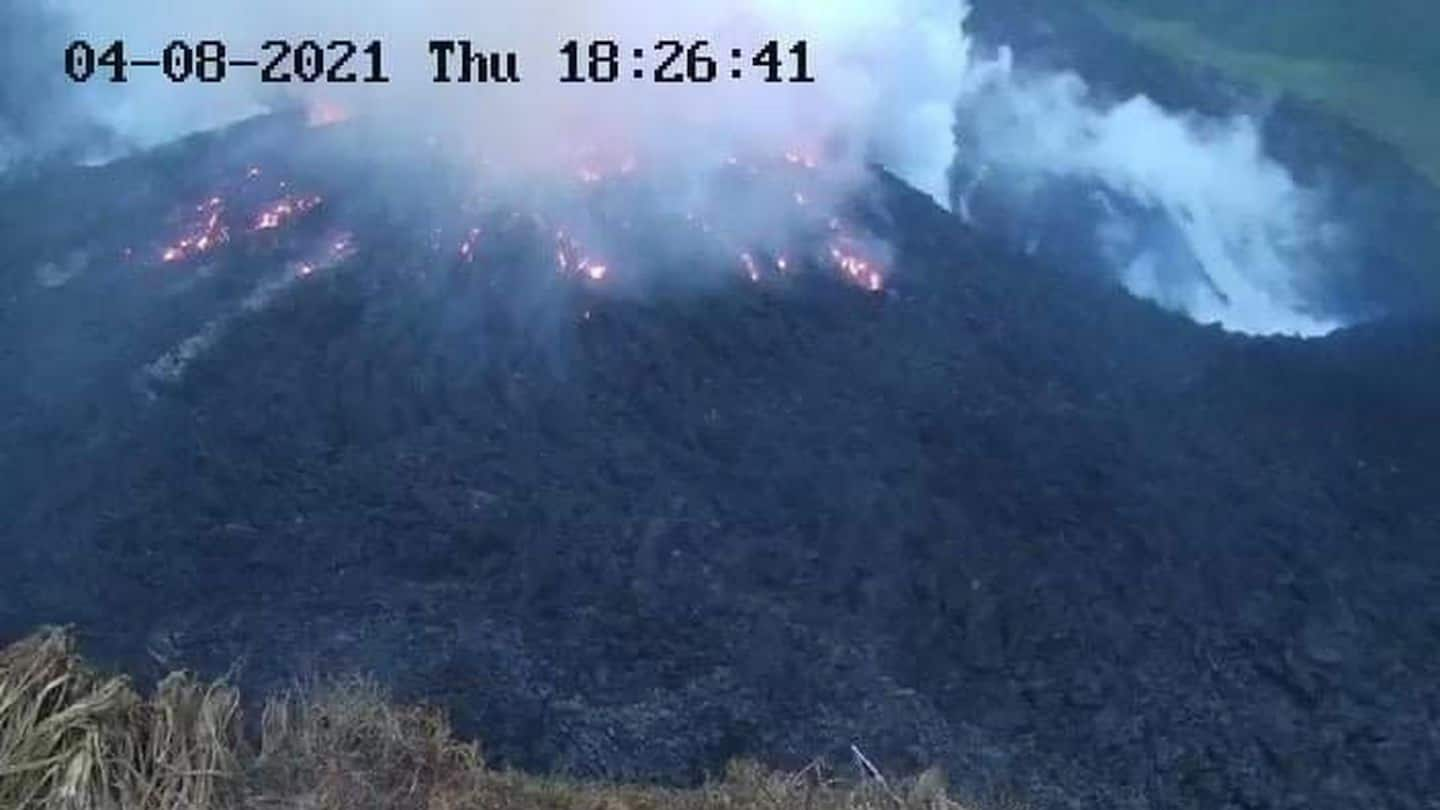Volcano on St. Vincent erupts, spewing column of ash amid evacuations

Satellite images and photos shared on social media captured a thick column rising from the 4,049-foot volcano that began erupting at 8:41 a.m. Plumes of brown ash and smoke drifted higher as they moved northeast, reaching at least 38,500 feet into the atmosphere, near the altitude at which many commercial aircraft fly.
Residents posted videos showing debris falling “like rain” on parts of the island in St. Vincent and the Grenadines. Officials announced a second, smaller eruption around 3 p.m..
“The ash column is starting to fall back down around the volcano,” Erouscilla Joseph, director of the Seismic Research Centre at the University of the West Indies, told The Washington Post “It is possible that there will be some property damage. This could go on for days, weeks or even months.”
In an interview with The Washington Post, Prime Minister Ralph Gonsalves said there had been no reports of injuries or fatalities.
On Thursday, authorities announced that the threat of La Soufrière erupting was “imminent,” ordering thousands to evacuate from a danger zone on the northern end of the island. Emergency management officials issued a red-alert after scientists observed tremors on the island’s only active volcano that indicated a heightened risk of eruption as magma broke up rocks and moved near the surface.
Evacuees fled the island’s “red zone,” the area where the volcano is most hazardous, traveling in small vans and cars to emergency shelters in safer quarters of St. Vincent or boarding boats to nearby islands. Gonsalves estimated that 14,000 people were being evacuated from the area, roughly 10,000 of whom had already reached safety by Friday afternoon.
Gonsalves said, however, that there had been some “hiccups” due to clogged roads on the northeastern side of the island.
“I don’t want us to panic,” he said. “I want this to be disciplined. I want this to be orderly.”
He said the island had benefited from trade winds that appeared to be pushing the worst of the volcanic ash into the ocean. But Theresa Daniel, a spokeswoman for the country’s National Emergency Management Organization told The Washington Post that efforts to evacuate communities in the shadow of the volcano were being complicated by low visibility and debris.
“The efforts are a little stymied because of the ash flow,” she said.
Oshea Collis, 25, a resident and Red Cross volunteer in St. Vincent, said she was gathering last minute supplies when she heard the blast of the first eruption and saw the volcano disgorge a monstrous cloud of smoke and ash into the sky.
“It was like several thunder [claps] at the same time,” she said. “People were screaming as soon as it began. It was total chaos. Everything was paralyzed and people ran to their homes.”
The morning’s sunny weather, she said, had changed to a cloudy sky filled with ash.
“I am scared,” Collis said. “But I need to help more people, so I’m trying to control it.”
In a statement on social media, the Seismic Research Centre at the University of the West Indies said the ash has begun to fall on the flanks of the volcano and surrounding communities, including Chateaubelair and Petit Bordel.
The NEMO Facebook page became an impromptu window into the tense effort to evacuate nearby communities.
“Look folks the road is packed with everyone,” wrote one Facebook user, JoJo Lynn. “Small island with a large number of vehicles creates no movement in an emergency.
Gonsalves said some 2,000 people had been relocated to 20 active shelters and that more space was being made inside hotels and inns both within the country and in surrounding island nations. He fought back tears as he spoke of the assistance of nearby nations and cruise lines that were mobilizing to aid evacuees.
“It brings home that we are one Caribbean family,” he said.
In a bulletin, the National Weather Service warned pilots that volcanic ash could be present in the atmosphere, a significant hazard to aviation. The metallic filaments in volcanic ash can accrete and melt on turbines, choking engines and threatening aircraft.
The plume was tall enough to spark volcanic lightning, with several plume-to-ground strikes hitting the waters west of the island, up to five miles away from the volcano. Satellite imagery confirms that most material associated with the plume was drifting east-northeast and would likely pass north of Barbados.
The National Hurricane Center in the United States also issued an ashfall advisory for mariners.
Royal Caribbean and Carnival Cruise Lines provided ships to evacuate Vincentians off the island, which arrived at port on Friday. Gonsalves said that several neighboring island nations, including Antigua and Barbuda, Barbados, Grenada and Saint Lucia, have offered to welcome evacuees.
In addition to mandating coronavirus vaccinations for cruise ship evacuees, Gonsalves was also “strongly recommending” that anyone entering emergency facilities on St. Vincent be immunized.
Roughly 11 percent of the nation’s 110,000 residents had been vaccinated. In February, St. Vincent and the Grenadines received 40,000 doses of the Oxford-AstraZeneca vaccine from Indian officials. And earlier this week, the country received an additional shipment of vaccine through Covax, an initiative backed by the World Health Organization to distribute doses equitably across the globe.
The active volcano has loomed over the former British colony as a constant threat. An eruption on May 6, 1902, devastated the island and killed nearly 1,600 people. Advance warning aided the St. Vincent population during the most recent major eruption in April 1979, when no casualties were reported.
Friday’s eruption came on the heels of a recession due to a pandemic-related plunge in tourism.
Rebuilding, Gonsalves said, would be “an awesome challenge.”
“But you know, we are sturdy people and we are going to bounce back,” he said. “I am not a lamentations man.”
This report has been updated.
Ana Vanessa Herrero in Caracas, Venezuela, contributed to this report.






